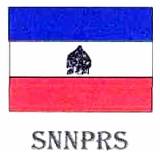
 |
|
P. O. Box 153 AWASSA, ETHIOPIA Tel. 046-220-39-41/220-83-33 Fax 046-220-39-39/046-220-69-67 |
|
Top | About us | Our Vision | Project Library | Photo Gallery | Contact Us |
|
Welcome to Our Home! Message from the Bureau Head is here, updated periodically. Give me your comments for a better bureau; --> Contact Us Links
|
About Us | |||
Hisory and Structures |
||||
Country wide, 7 drinking water supply and sewerage authorities were established in 1984 (1976E.C) to improve the water supply problem in the rural and urban areas. The southern branch was one of the branches established. In 1991 the ruling government was changed and in 1994 the Ethiopian Federal Democratic Republic constitution was established. Based on the constitution proclamation 1/1987 article 47/1 nine federal states were formed. The southern regional government was one of the nine regions. The water resource, minerals and energy bureau was formed according to the proclamation number 3/88 which specified the mandates of the regional executive bodies. The bureau was reestablished based on the revised regional constitution proclamation number 35/94 and the water resources management policy and strategy according to proclamation number 64/95 article 28 as a water resource development bureau. Recently the irrigation sector has been added to the bureau (in November 2005 (1998)) after the third regional council meeting. The following are the main objectives of the bureau, • To enhance the proper utilization and conservation of the water, mineral and energy resources of the region. • To provide safe drinking water for the community and managing the schemes • To undertake small and medium scale irrigation study, design and construction quality control. • To carry out mineral and energy explorations, development and promotion of appropriate technologies. The water resources development bureau has 2 Sectors and an Agency namely; Drinking Water Supply Sector (DWSS), Irrigation Development Sector (IDS) and Mines and energy agency (MEA). According to the new structure drinking water sector has three departments: (1) water resources development (WRD), (2) water supply study and design (WSSD) and (3) operation and maintenances (OM); the irrigation sector has two departments: (1) irrigation work study and design and (2) Irrigation construction quality control; and the mines and energy agency has two departments: (1) mineral resource development and (2) energy department. There are other units such as (1) Urban water service improvement, community participation and training service and (3) planning and civil service reform service and (4) pool center which are directly accountable to the bureau head. There is also one pool center to support the activities of the different sectors in the bureau. Line offices are established in the zones, special Woredas and Woredas to support the activities of the bureau directly. Our organization chart is shown here.
|
||||
Our Policies |
||||
Water resources development policy, water sector strategy and 15 year water sector development programs are formulated and under implementation for effective utilization of the water resources for the development of the nation. In addition to this there are water resources management and utilization proclamation, and legislation manuals and documents. To meet the millennium goal in the water supply and sanitation sector the country have formulated the universal access plan which will enable the urban and rural household of the nation to have full access to safe water supply and sanitation within the years 2005 to 2012 (1998-2004E.C). The energy policy is related to the other economic plans and it focuses on enhancing the provision of energy for the demand and also rural energy expansion. It is believed that the energy policy will give solution for the social and economic problems of the country. Since the policy focuses on utilizing the locally available materials and human resources for the expansion of micro and small industry development it will have contribution for the improvement of livelihood of the farmers.
|
||||
Our Challenges |
||||
During the implementation of previous strategic plans, the following challenges were faced: (1) Lack of integration
|
||||
|
||||
|
Copyright © 2007 Water Resources Development bureau, SNNPRS, ETHIOPIA. All rights reserved. |